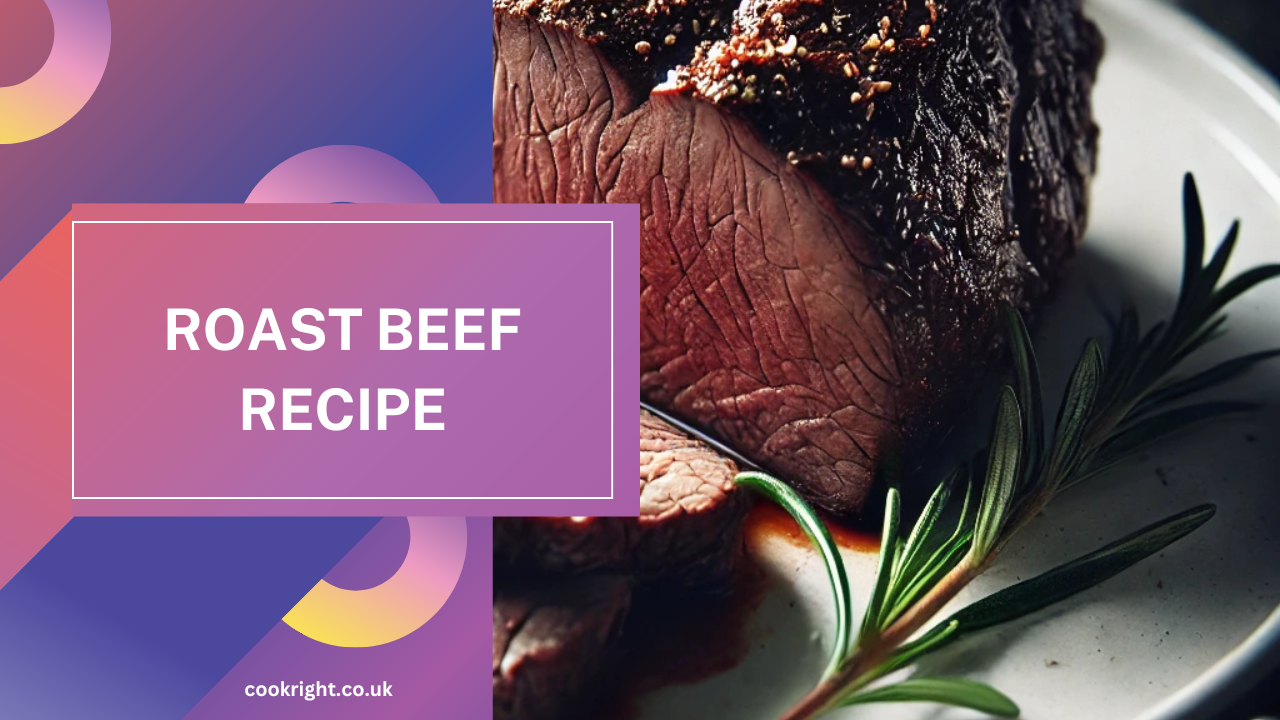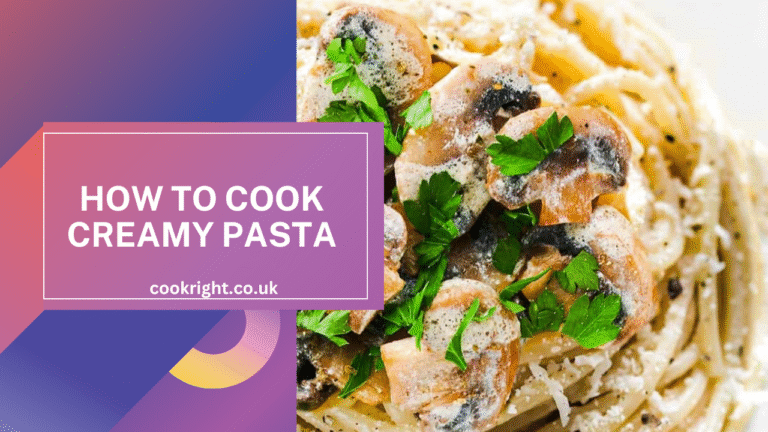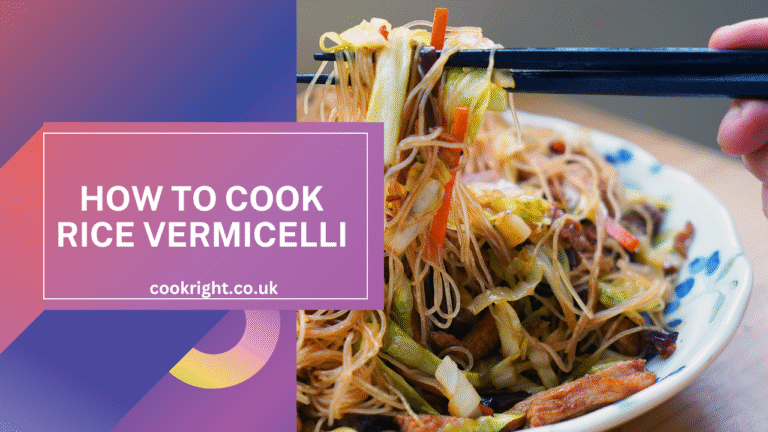Roast beef is a timeless classic that’s perfect for Sunday dinners, festive occasions, or even a cosy meal at home. Known for its rich flavour and versatility, a well-cooked roast beef can be the centrepiece of any table.
Whether you’re new to the kitchen or looking to refine your skills, this guide will walk you through the easy steps to cook roast beef to perfection. With the right cut, simple seasonings, and proper techniques, you’ll have a dish that’s tender, juicy, and packed with flavour. Let’s get started!
Ingredients
To cook a delicious roast beef, you’ll need the following:
For the Roast
- 1.5–2kg (3–4lb) beef joint (ribeye, sirloin, or topside work well)
- 2 tablespoons olive oil
- 3 cloves garlic, minced or crushed
- 1 tablespoon sea salt
- 1 teaspoon freshly ground black pepper
- 1 tablespoon fresh rosemary, chopped (or 1 teaspoon dried rosemary)
- 1 tablespoon fresh thyme, chopped (or 1 teaspoon dried thyme)
Optional Vegetables for Roasting
- 3–4 large carrots, peeled and cut into chunks
- 2 medium onions, quartered
- 4–5 medium potatoes, peeled and halved
- 1 tablespoon olive oil
- Salt and pepper, to taste
For Serving (Optional)
- Gravy
- Horseradish sauce
- Yorkshire puddings
These simple ingredients, combined with the right preparation, will result in a roast beef that’s bursting with flavour.
Choosing the Right Cut
The success of your roast beef starts with selecting the right cut of meat. Different cuts offer varying levels of tenderness, flavour, and fat content, so it’s important to choose one that suits your preferences and cooking style. Here are some popular options:
1. Ribeye
- Known for its rich marbling and exceptional flavour.
- Perfect for a tender and juicy roast.
- Best cooked to medium-rare or medium.
2. Sirloin
- A leaner cut with a good balance of tenderness and flavour.
- Ideal for those who prefer less fat in their roast.
- Great for oven roasting or pan-searing before finishing in the oven.
3. Topside
- A budget-friendly option that’s lean and versatile.
- Requires careful cooking to avoid becoming too dry.
- Best when slow-cooked or roasted with a layer of fat for added moisture.
4. Fillet (Tenderloin)
- The most tender cut, with a delicate texture.
- Mild in flavour compared to other cuts.
- Often reserved for special occasions due to its higher price point.
Tips for Choosing Your Beef
- Look for marbling: Fine streaks of fat running through the meat enhance flavour and juiciness.
- Opt for quality: If possible, choose grass-fed or locally sourced beef for a better taste and texture.
- Consider the occasion: For an indulgent treat, go for ribeye or fillet; for a family meal, sirloin or topside are excellent choices.
With the right cut in hand, you’re ready to prepare a roast beef that will impress everyone at the table!
Preparing the Beef
Proper preparation is key to ensuring your roast beef turns out tender and flavourful. Follow these steps to get your beef ready for cooking:
1. Bring the Beef to Room Temperature
- Take the beef joint out of the fridge at least 30 minutes before cooking.
- Allowing it to come to room temperature ensures even cooking throughout.
2. Trim and Tie (if needed)
- Trim any excess fat or silver skin from the beef, but leave a thin layer of fat for flavour.
- If using a looser cut like topside, tie the beef with kitchen twine to maintain its shape during cooking.
3. Season Generously
- Pat the beef dry with paper towels to help the seasoning stick.
- Rub it with olive oil, then coat it generously with salt, pepper, garlic, rosemary, and thyme.
- For added flavour, make small incisions in the beef and insert slices of garlic or sprigs of herbs.
4. Rest Before Cooking
- Let the seasoned beef sit for 10–15 minutes to allow the flavours to penetrate the meat.
Cooking Methods
Depending on your preference and available equipment, here are two common methods for cooking roast beef:
1. Oven Roasting
- Preheat the oven to 220°C (200°C fan)/Gas Mark 7.
- Place the beef on a roasting rack in a shallow baking tray. Add chopped vegetables around the base if desired.
- Roast at the high temperature for 20 minutes to create a crust.
- Lower the temperature to 180°C (160°C fan)/Gas Mark 4 and continue roasting:
- Rare: 20 minutes per 500g.
- Medium: 25 minutes per 500g.
- Well-done: 30 minutes per 500g.
- Baste the beef with its juices halfway through cooking for extra moisture.
2. Slow Cooking
- Place the seasoned beef in a slow cooker with onions, carrots, and a cup of beef stock or red wine.
- Cook on low for 6–8 hours or on high for 3–4 hours.
- This method yields a tender, pull-apart roast.
Testing Doneness
To ensure your roast beef is cooked perfectly, use a meat thermometer to check the internal temperature:
- Rare: 50–55°C
- Medium-Rare: 55–60°C
- Medium: 60–65°C
- Well-Done: 70°C+
Tips for Testing Doneness
- Insert the thermometer into the thickest part of the beef, avoiding bones or fat.
- Remember that the beef will continue to cook as it rests, so remove it from the oven when it’s 5°C below your desired doneness.
With these methods, you’ll achieve a perfectly cooked roast beef every time!
Serving Suggestions
A well-cooked roast beef deserves the perfect presentation and accompaniments to make it shine. Here are some ideas to elevate your meal:
1. Carving the Beef
- Let the roast rest for at least 15–20 minutes after cooking. This helps retain its juices.
- Use a sharp carving knife to slice the beef against the grain for maximum tenderness.
2. Side Dishes
- Classic Options: Yorkshire puddings, roast potatoes, and steamed green beans.
- Vegetable Medley: Roasted carrots, parsnips, and Brussels sprouts seasoned with olive oil and herbs.
- Comfort Foods: Creamy mashed potatoes or buttery peas.
3. Condiments and Gravy
- Serve with a rich beef gravy made from the pan drippings.
- Offer horseradish sauce or a dollop of mustard for added zing.
With these sides and condiments, your roast beef will be the star of the table!
Common Mistakes to Avoid
To ensure your roast beef turns out perfectly, avoid these common pitfalls:
- Skipping the Resting Stage: Resting allows the juices to redistribute, keeping the beef moist. Skipping this step can result in dry meat.
- Overcooking: Use a meat thermometer to monitor doneness and avoid overcooking. Remember, beef continues to cook slightly after it’s removed from the oven.
- Not Seasoning Enough: Under-seasoning leads to bland meat. Be generous with salt, pepper, and herbs for full flavour.
- Cooking Cold Meat: Putting a cold joint straight into the oven can result in uneven cooking. Always let the beef come to room temperature first.
- Forgetting to Baste: Basting the beef with its own juices ensures a moist and flavourful roast, especially for lean cuts.
Conclusion
Cooking roast beef doesn’t have to be complicated. By choosing the right cut, preparing it properly, and following the correct cooking methods, you can create a mouth-watering dish that’s perfect for any occasion.
Whether it’s a family meal or a festive celebration, this easy guide ensures you’ll impress your guests with tender, flavour-packed roast beef. Pair it with your favourite sides and enjoy the hearty, satisfying results of your culinary efforts!




